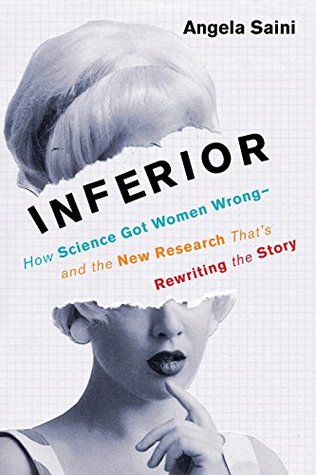More on this book
Community
Kindle Notes & Highlights
by
Angela Saini
Read between
October 20 - December 10, 2018
Imbalance in the sciences is at least partly because women face a web of pressures throughout their lives, which men often don’t face.
Joanne McGowan liked this
We’re still living with the legacy of an establishment that’s just beginning to recover from centuries of entrenched exclusion and prejudice.
potential to knock down the greatest barrier that stands between women and full equality—the one in our minds.
Joanne McGowan liked this
“Let the ‘environment’ of women be similar to that of men and with his opportunities, before she be fairly judged, intellectually his inferior, please.”
Joanne McGowan liked this
With good research and reliable data, the strong can become weak and the weak, strong.
As scientists start to explore the female body in truer detail, they are learning just how powerful a girl’s survival edge is—even in a world that doesn’t always want her.
Joanne McGowan liked this
“The biological risk is against the boy, but the social risk is against the girl.”
It’s part of being human. We tend to interpret new information by categorizing it, using whatever understanding we already have, even if this is prejudiced.
“Our brain actually absorbs a lot of information all the time, and that includes people’s attitudes to you, expectations of you,” says Rippon.
Hrdy recalls saying, “A feminist is just someone who advocates equal opportunities for both sexes. In other words, it’s being democratic. And we’re all feminists, or you should be ashamed not to be.”
“When I studied a group of titi monkeys in Peru, the infant was usually carried by the father and spent most of its time with him. The father is completely involved with the rearing of the young. The mother was really just a dairy bar, a pair of milk-secreting nipples.”
is that it’s more common for mothers not to form an immediate attachment to their offspring than we like to believe.
group. For the babies killed soon after birth, the most common perpetrators are teenage mothers, especially those who are single and living at home with parents who might be disapproving of their pregnancies. Most of them aren’t killing their babies because they’re psychotic or mentally ill, says Craig, but because of the desperate positions they find themselves in.
It reinforces why lawmakers shouldn’t outlaw abortion and force women to have babies they feel they cannot raise or do not want. It also highlights how important it is that governments provide better welfare and child care for mothers, especially those who don’t have support at home.
Joanne McGowan liked this
The weight of evidence does at least seem to be in favor of the idea that humans didn’t evolve to raise their children single-handedly. Child care was not the sole responsibility of mothers.
Older siblings had a more positive effect than anyone besides the mother.
“A theory that leaves out half of the human species is unbalanced,” Linton announced.
women’s running abilities decline extremely slowly into old age. They’ve been known to go long distances even while pregnant.
Joanne McGowan liked this


